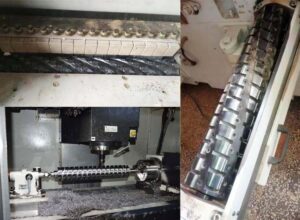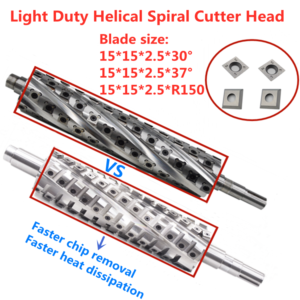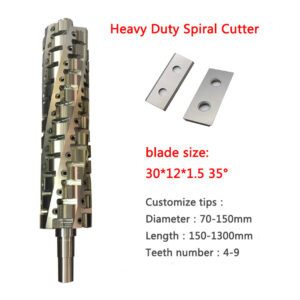Joiners and planers are two important tools for cutting wood, making it smoother, and controlling the thickness of wood; but what is the specific difference between them?
Both are very important cutter head machines, but many woodworking enthusiasts may not know the detailed difference, especially those who are just starting woodworking projects. Today we will briefly introduce these two tools. If you are still struggling with which tool to buy first, keep reading.
Planer
A thickness planer, also known as a thickness gauge or simply a planer, is a woodworking cutter head machine used to flatten and reduce a wood board to a uniform thickness along its length. In short, a planer thins a thick board.
This machine has a flat bed with a cutter head mounted on it. Rollers feed the workpiece through the bed and under the cutter head, which removes a layer of wood as the workpiece passes through the machine.
A planer has settings that can be used to ensure a uniform thickness of the length of the board. The infeed and outfeed pressure rollers feed the board into the machine at a constant speed and reduce it to the precise thickness required for the project.
Advantages & Disadvantages of a Planer
It’s easy to see that the advantage of this cutter head machine is that it removes material to create a smooth, flat, uniform thickness surface that is parallel to the opposing face. Also, by dialing in the thickness setting, you can feed multiple boards into the planer and have them all milled to the same thickness.
While the benefits of a planer are appealing, it also has some disadvantages. Because the rollers apply pressure to the workpiece, a planer cannot correct defects such as warped, cupped, bent, or twisted boards.
Joiner
A joiner is a woodworking machine that functions like a hand plane and is used to smooth one face of a board and even out the adjacent edges. But while using a hand plane to smooth out a board requires skill and is time-consuming, using a joiner is quick, easy, and virtually effortless.
A joiner has an infeed table and an outfeed table with a rotating blade mounted between them. The wood is passed through the rotating blade to remove small amounts of material.
Advantages & Disadvantages of a Joiner
A joiner is an essential tool for rough-cut wood. Rough-cut wood has not yet been milled to its final thickness or size. The surface has saw marks and feels rough, so using a jointer is the most appropriate choice.
In addition, a jointer can also be used to correct common wood defects, such as warped, cupped, bent or twisted boards. In addition, it can adjust the fence to create square edges, bevels or chamfers.
But there are many disadvantages to a jointer: First, the jointer lacks the ability to control the thickness of the finished board. That is, the jointer cannot cut multiple boards to the same thickness.
In addition, the jointer cannot ensure that the second face or edge is parallel to the first face, and additional tools such as a planer and a table saw are required to adjust the thickness of the board and make the second edge flat.
From the above information, we can see that both jointers and planers can smooth and flatten wood, but each has advantages and disadvantages that make them more suitable for specific jobs. Although jointers and planers perform different tasks, they are also complementary tools. In other words, you often need to use both machines to achieve the results you want.
But when buying a jointer and a planer, cost is undoubtedly a very important consideration. For hobbyists in woodworking or small workshops, most people can only afford one at a time. So how will we consider which one to buy?
As I mentioned before, jointers and planers each have specific advantages that make them better suited for certain tasks, so the answer to which is better depends on the goals of your woodworking project.
First you need to consider: What type of project are you working on? Are you going to use rough-cut lumber from a sawmill, or are you going to use dimensional lumber from a home improvement store?
If you plan to use rough-cut lumber from a sawmill, the wood will have more surface flaws, so a jointer will be helpful; if you buy ready-made lumber from a home improvement store or lumberyard and just need to reduce the thickness of the dimensional lumber to what you need, a planer may be what you need.
Both tools have their own unique advantages and disadvantages, so you need to determine which one is right for you based on the specific situation. I hope the above article is helpful to you.



